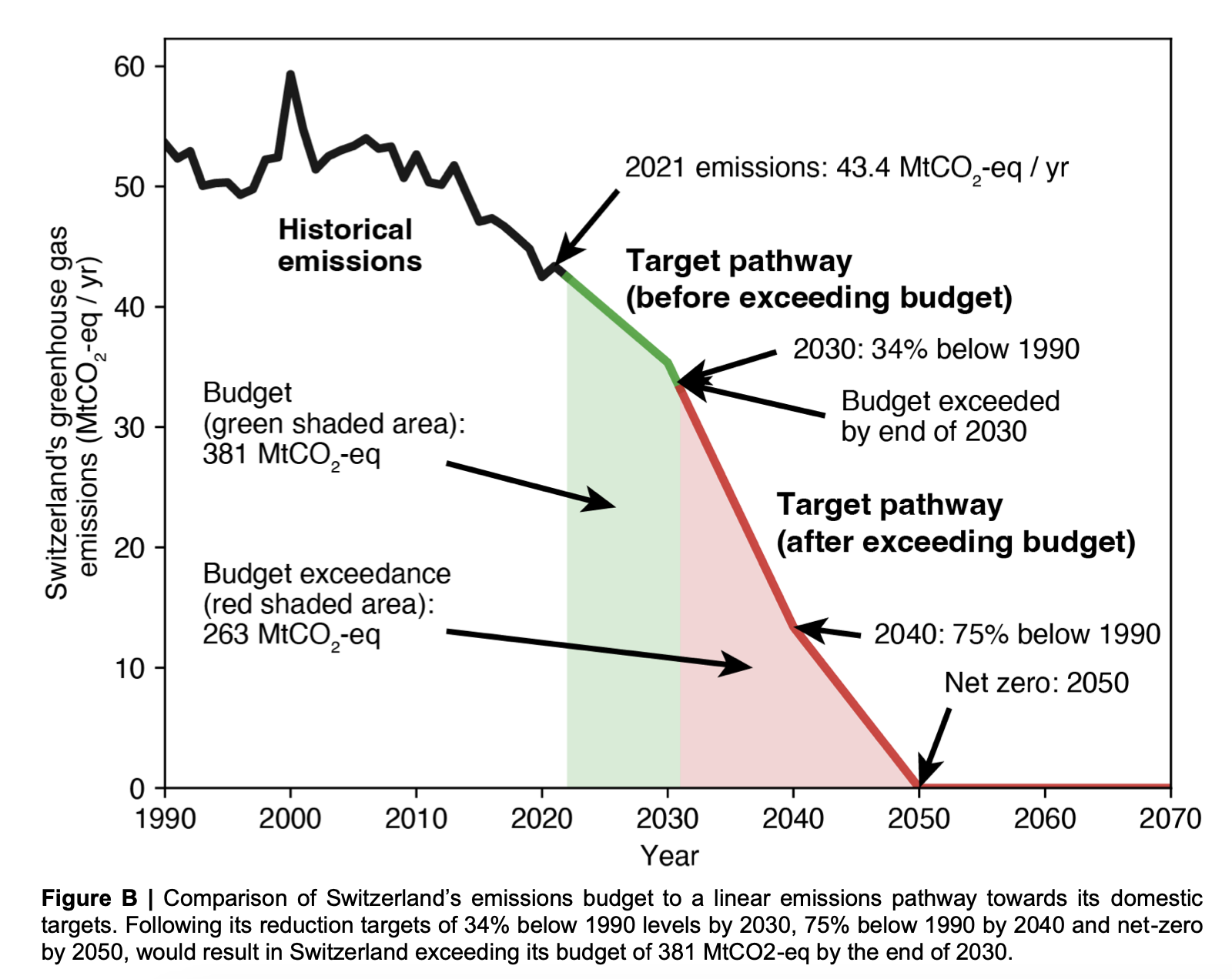What is a carbon budget?
This figure was calculated by researchers from the Universities of Utrecht and Melbourne on behalf of the KlimaSeniorinnen association for a case before the European Court of Human Rights in 2023. It is based on the total remaining carbon budget of 381 megatonnes from 2022 to 2100 still available to Switzerland to limit global warming to 1.5°C based on its population size and historic emissions. This figure was then equally divided among all Swiss residents for the period up to 2100.
A similar figure for limiting global warming to 2.0°C was calculated by researchers at the University of Geneva in 2015 on behalf of the Swiss Federal Office for the Environment (FOEN). With a total budget for Switzerland of 520 megatonnes of CO₂ as of 2015, the annual budget per person in Switzerland amounts to a maximum of 0.6t of CO₂ by 2100.
Since Switzerland still produces far more CO₂ than its theoretical budget, its effective carbon budget for the future is even lower. In order to stay within budget without negative emissions, Switzerland would have to reach net zero by 2040. Basically, the later the net-zero emissions target is reached, the more negative emissions from climate protection projects and CO₂ storage technologies will be necessary (see: What are “negative emissions”?).
Sources:
Dao, et al. (2015)
Robiou du Pont & Nicholls (2023)
You can find further exciting information on the subject of climate change and climate protection in our climate booklet

